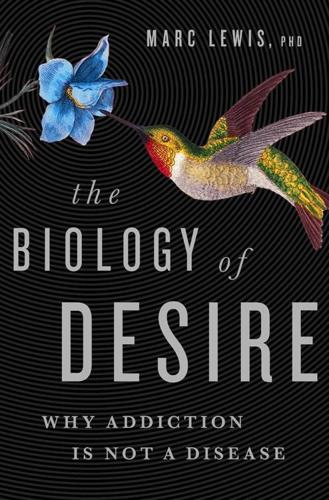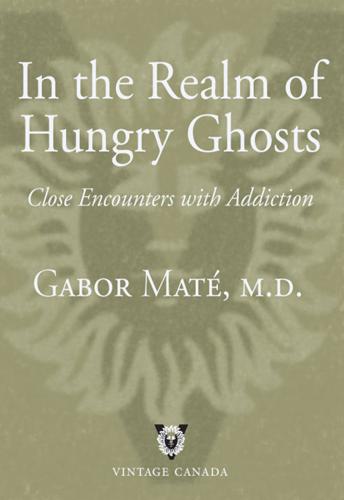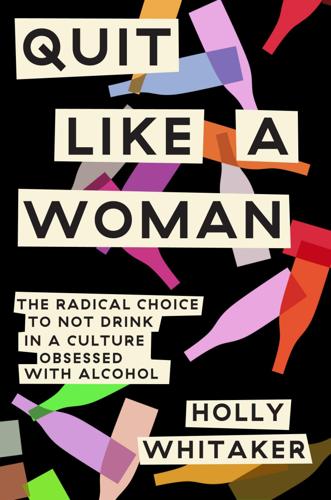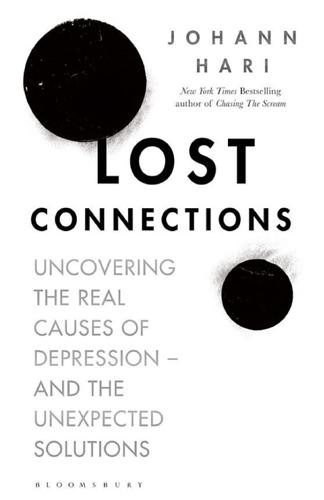
Chasing the Scream: The First and Last Days of the War on Drugs
by
Johann Hari
Published 20 Jan 2015
v=7kS72J5Nlm8&list=PL6301BC630AE6F23E&index=106&feature=plpp_video, viewed November 1, 2012. 10 This discussion of the experiment is informed heavily by the two original studies of Rat Park by Alexander and colleagues: “The Effect of Housing and Gender on Morphine Self-Administration in Rats,” Psychopharmacology 58, 175–79, and “Effect of Early and Later Colony Housing on Oral Ingestion of Morphine by Rats,” Pharmacology, Biochemistry and Behaviour, vol. 15, 571–76. 11 Slater, Opening Skinner’s Box, 165. 12 See “The View from Rat Park” by Bruce K. Alexander, http://globalizationofaddiction.ca/articles-speeches/177-addiction-the-view-from-rat-park.html, accessed November 1, 2012. 13 Slater, Opening Skinner’s Box, 168. 14 Bruce K. Alexander, Globalizing Addiction: A Study in Poverty of the Spirit, 195.
…
Miller, Case for Legalizing Drugs, 54–55. 24 See Bruce K. Alexander, “The Rise and Fall of the Official View of Addiction,” http://globalizationofaddiction.ca/articles-speeches/240-rise-and-fall-of-the-official-view-of-addictionnew.html, accessed March 12, 2013. 25 See Jessica Warner, Craze: Gin and Debauchery in an Age of Reason. 26 See Nick Reding, Methland: The Death and Life of an American Small Town. 27 Bruce K. Alexander, “The View From Rat Park,” http://globalizationofaddiction.ca/articles-speeches/177-addiction-the-view-from-rat-park.html, accessed March 12, 2013. 28 http://www.cedro-uva.org/lib/cohen.addiction.html, accessed February 5, 2012.
…
He took a set of rats13 and made them drink the morphine solution for fifty-seven days, in their cage, alone. If drugs can hijack your brain, that will definitely do it. Then he put these junkies into Rat Park. Would they carry on using compulsively, even when their environment improved? Had the drug taken them over? In Rat Park, the junkie rats seemed to have some twitches of withdrawal—but quite quickly, they stopped drinking the morphine. A happy social environment, it seemed, freed them of their addiction. In Rat Park, Bruce writes, “nothing that we tried14 instilled a strong appetite for morphine or produced anything that looked to us like addiction.” Bruce naturally wanted to know if this applied to humans.

The Biology of Desire: Why Addiction Is Not a Disease
by
Marc Lewis Phd
Published 13 Jul 2015
Dirk Hanson, “Ivan Oransky on the Disease Model at TEDMED 2012,” Addiction Inbox: The Science of Substance Abuse, April 15, 2012, http://addiction-dirkh.blogspot.com.es/2012/04/ivan-oransky-on-disease-model-at-tedmed.html. 18. Gene Heyman, Addiction: A Disorder of Choice (Cambridge, MA: Harvard University Press, 2009). 19. Heyman, “Quitting Drugs.” 20. An easily accessible review of these studies is Bruce K. Alexander, “Addiction: The View from Rat Park,” www.brucekalexander.com/articles-speeches/rat-park/148-addiction-the-view-from-rat-park. 21. Carl Hart, High Price: Drugs, Neuroscience, and Discovering Myself (New York: Harper, 2013). 22. Stanton Peele and Ilse Thompson, Recover! Stop Thinking Like an Addict and Reclaim Your Life with The PERFECT Program (New York: Da Capo Press, 2014). 23.
…
According to some experts, the best evidence against the disease model comes from the study of heroin-addicted veterans of the Vietnam War, about 75 percent of whom kicked the habit once they returned home. A number of us view this heartening statistic as the human counterpart to what Bruce Alexander demonstrated in his classic “Rat Park” studies.20 Alexander and colleagues offered rats a choice between morphine solution and water. Rats raised in isolated steel cages chose the morphine. But once placed in a large wooden enclosure with other rats and allowed to socialize, they switched to plain water, even when they were currently addicted.
…
Chandler’s research has another implication for addiction, and I note it here as a suggestion for further thought. Several scholars or experts on addiction have proposed that confining social conditions and alienation from one’s culture are major ingredients in the rise of addiction. Bruce Alexander, who conducted the Rat Park studies (reviewed in Chapter One), has outlined a broad social theory of addiction in his 2008 book, The Globalization of Addiction, where he investigates societal dislocation and its negative impacts.3 Carl Hart (also introduced in Chapter One) showed how members of minority groups living in the inner city chose to take drugs because other choices seemed unavailable or meaningless.

The Twittering Machine
by
Richard Seymour
Published 20 Aug 2019
Mike Elgan, ‘Social media addiction is a bigger problem than you think’, CIO, 14 December 2015. 23. . . . the ‘gamification of capitalism’. Byung-Chul Han, Psychopolitics: Neoliberalism and New Technologies of Power, Verso: London and New York, 2017. 24. Even Skinner’s rats were not Skinner’s rats . . . Bruce K Alexander, ‘Addiction: The View from Rat Park’, 2010 www.brucekalexander.com. 25. Marcus Gilroy-Ware’s study of social media . . . Marcus Gilroy-Ware, Filling the Void: Emotion, Capitalism and Social Media, Repeater Books: London, 2017. 26. . . . our online avatar resembles a ‘virtual tooth’ . . . Hans Bellmer, Little Anatomy of the Physical Unconscious, or The Anatomy of the Image, Dominion: Waterbury Centre, VT, 2004, p. 5. 27.
…
Sadly the ad is no longer available. It is described in detail by Tim Nudd, ‘Ad of the Day: Facebook’, Adweek, 4 October 2012. 27. But as the cyberpunk writer . . . Bruce Sterling, quoted in Virginia Heffernan, Magic and Loss: The Internet as Art, Simon & Schuster: New York, 2017, p. 25. 28. What Bruce Alexander calls . . . Bruce Alexander, The Globalization of Addiction: A Study in Poverty of the Spirit, Oxford University Press: Oxford, 2011. 29. . . . ‘uniform distancelessness’ . . . Christopher Bollas, Meaning and Melancholia: Life in the Age of Bewilderment, Routledge: London and New York, 2018, p. 49. 30. We prefer the machine . . .
…
Not in the sense of the old classist stereotype that ‘the poor love their cellphones’: no powerful group would turn down the opportunities that smartphones and social media offer. The powerful simply engage differently with the machine. But any culture that values connectivity so highly must be as impoverished in its social life as a culture obsessed with happiness is bitterly depressed. What Bruce Alexander calls the state of permanent ‘psychosocial dislocation’ in late capitalism, with life overrun by the law of markets and competition, is the context for soaring addiction rates.28 It is as if the addictive relationship stands in for the social relationships that have been upended by the turbulence of capitalism.

In the Realm of Hungry Ghosts: Close Encounters With Addiction
by
Gabor Mate
and
Peter A. Levine
Published 5 Jan 2010
One dispenser contained a morphine solution and the other an inert solution. It turned out that for the Rat Park animals, morphine held little attraction, even when it was dissolved in a sickeningly sweet liquid usually irresistible to rodents and even after these rats were forced to consume morphine for weeks, to the point that they would develop distressing physical withdrawal symptoms if they didn’t use it. In other words, in this “natural” environment a rat will stay away from the drug if given a choice in the matter—even if it’s already physically dependent on the narcotic. “Nothing that we tried,” reported Bruce Alexander, “instilled a strong appetite for morphine or produced anything that looked like addiction in rats that were housed in a reasonably normal environment.”
…
Animal studies have demonstrated that isolation leads to changes in brain receptors and increased propensity for drug use in infant animals, and in adults reduces the activity of dopamine-dependent nerve cells.36,37 Unlike rats reared in isolation, rats housed together in stable social groupings resisted cocaine self-administration—in the same way that Bruce Alexander’s tenants in Rat Park were impervious to the charms of heroin.38 Human children do not have to be reared in physical isolation to suffer deprivation: emotional isolation will have the same effect, as does stress on the parent. As we will later see, stress on pregnant mothers has a negative impact on dopamine activity in the brain of the unborn infant, an impact that can last well past birth.
…
Alexander has conducted elegant experiments to show that even lab rats, given reasonably normal living situations, will resist the addictive appeal of drugs: My colleagues and I built the most natural environment for rats that we could contrive in the laboratory. “Rat Park,” as it came to be called, was airy, spacious, with about 200 times the square footage of a standard laboratory cage. It was also scenic (with a peaceful British Columbia forest painted on the plywood walls), comfortable (with empty tins, wood scraps, and other desiderata strewn about on the floor), and sociable (with 16–20 rats of both sexes in residence at once). …We built a short tunnel opening into Rat Park that was just large enough to accommodate one rat at a time. At the far end of the tunnel, the rats could release a fluid from either of two drop dispensers.

Quit Like a Woman: The Radical Choice to Not Drink in a Culture Obsessed With Alcohol
by
Holly Glenn Whitaker
Published 9 Jan 2020
The qualifying difference between the two is that the learning model assumes curability and adaptability (we unlearn addiction the same way we learn it), while the disease model assumes we manage it into perpetuity (we are always an addict the way a diabetic is always a diabetic). The dislocation model, as proposed by Bruce Alexander, asserts that addiction is wholly driven by a free-market (capitalist) system. Alexander, the researcher of the Rat Park experiments, argues (in a very, very long book) that addiction stems from an increasingly dislocated capitalist society—not from medical pathology. In other words, addiction is a direct or indirect outgrowth of society; humans are becoming increasingly addicted not because some mutant addict gene is flooding the pool or because alcohol or addictive chemicals and behaviors are increasingly available, but because we are becoming more disconnected from our purpose, nature, culture, and each other.
…
Lewis argues that addiction is the brain reacting to a motivating experience the way it is supposed to and that addiction is the product of a brain that learns and adapts to repeated experiences, and that because the brain is doing what it is built to do, addiction can’t be a disease—it’s a pathological overlearning, a feedback loop with dire consequences. In his book The Globalization of Addiction, Bruce Alexander identifies four definitions of addiction. Alexander asserts the closest and truest definition is an “overwhelming involvement with any pursuit whatsoever that is harmful to the addicted person, to society, or to both.” He stresses that addiction must not be limited (as it often is) to alcohol and drugs but must encompass the wider set of behaviors, habits, chemicals, and pursuits (gambling, work, power seeking, internet porn, sex, tech, etc.) that can come to dominate an individual’s world.
…
We aren’t just guzzling wine because of, say, our dopamine; we’re getting absolutely shitfaced because to exist in a world where our labor is our value, where families and communities are disappearing, where a Kardashian’s contouring trick gets more attention than detention camps on our borders, where we look for jobs that pay our rent over jobs that feed our soul, is to barely exist; is to be disconnected from any sort of meaning and value. In The Globalization of Addiction, Bruce Alexander suggests that addiction is a symptom of a free-market, capitalist society, which prioritizes money and materialism above all else. In our singular pursuit to make money, we deprioritize connection to our purpose as individuals, each other, and our culture. When we lose this connection—this essential belonging to ourselves and a community—for the sake of making ends meet or making it big, we become nothing more than hungry ghosts, existing to fill a void through consumption and materialism that will never be filled by these things.

Memoirs of an Addicted Brain: A Neuroscientist Examines His Former Life on Drugs
by
Marc Lewis Phd
Published 5 Mar 2013
Evidence for the neural markers of ego depletion was reported by Inzlicht and Gutsell in the journal Psychological Science, vol. 18, 2007, and by Hirsh and Inzlicht in the journal Psychophysiology, vol. 47, 2010. p. 247. A unified framework for understanding addictive choices, emphasizing cognitive deficits and errors, was published by Redish, Jensen, and Johnson in the journal Behavioral and Brain Sciences, vol. 31, 2008. p. 253. Bruce Alexander, a Canadian psychologist, published the results of his “Rat Park” experiments in Pharmacology, Biochemistry & Behavior, vol. 15, 1981. His findings were so challenging to conventional views of addiction that his research was rejected by higher-profile journals. Chapter 14 p. 275. I published a speculative article on the neural mechanisms of internal dialogue in the journal Theory & Psychology, vol. 12, 2002.
…
Rats will often consume morphine and other opiates, but until a famous experiment in the late seventies, most psychologists never thought to ask why. While some rats were housed in the usual sort of cage, made of cold steel wire, and isolated, one rat to a cage, others were housed in a “rat park”: a large open-topped wooden box full of wood shavings and other diversions and, most importantly, together in a large group. All rats were offered water or morphine to drink. The choice was theirs. But the rats living in Rat Park drank a lot less morphine than their counterparts living in isolation. Presumably because they had fun and they had company in their daily lives. The authors saw addiction as a product of an impoverished environment, not a characteristic of a particular class of drugs.
…
Table of Contents Title Page Dedication Introduction • PART ONE • - THE TABOR CHRONICLES Chapter 1 - CHANGING STATE Chapter 2 - GIVING UP CONTROL Chapter 3 - INTO THE FIRE Chapter 4 - DOPAMINE AND DESIRE: A ROMANTIC INTERLUDE • PART TWO • - LIFE AND DEATH IN CALIFORNIA Chapter 5 - PULLING OUT THE STOPS Chapter 6 - PSYCHEDELICS, SEX, AND VIOLENCE Chapter 7 - A PSYCHEDELIC FINALE: COPS AND ANGELS Chapter 8 - HEROIN, THE HEAP, AND THE SLEEP OF THE DEAD Chapter 9 - GETTING DOWN • PART THREE • - GOING PLACES Chapter 10 - TRAVEL BROADENS THE MIND Chapter 11 - CONSCIOUSNESS LOST AND FOUND Chapter 12 - THE OPIUM FIELDS • PART FOUR • - IN SICKNESS AND IN HEALTH Chapter 13 - NIGHT LIFE IN RAT PARK Chapter 14 - CRIME AND PUNISHMENT Chapter 15 - HEALING EPILOGUE Acknowledgments ENDNOTES INDEX ABOUT THE AUTHOR Copyright Page For Isabel, who never lost confidence in this book or its author INTRODUCTION WE ARE PRONE TO A CYCLE of craving what we don’t have, finding it, using it up or losing it, then craving it all the more.

Lost Connections: Uncovering the Real Causes of Depression – and the Unexpected Solutions
by
Johann Hari
Published 1 Jan 2018
In Norway, Sturla Haugsjerd and Oda Julie helped me enormously. In São Paulo, Rebeca Lerer helped me make sense of everything. And in Vietnam, my wonderful fixer, Dang Hoang Linh, prevented me from vomiting myself to death, for which I’ll always be grateful. The wonderful, humane psychologist Bruce Alexander spurred me to think differently about mental health in the first place through his life-changing “Rat Park” experiment, which I discussed in my previous book, Chasing the Scream, Jake and Joe Wilkinson helped to shape this book and gave me a lot of joy while they did it. My parents, Violet McRae and Eduard Hari, my siblings, Elisa and Steven, my sister-in-law, Nicola, my nephews, Josh, Aaron, and Ben, and my niece, Erin, all did the same.
…
depression and anxiety have three kinds of causes Another key reason leading me to these broader insights was my research into the social causes of addiction, for my book Chasing the Scream: The First and Last Days of the War on Drugs (New York: Bloomsbury, 2015). I don’t want to repeat that material here, but if you’re interested in how I came to these insights, check out chapters twelve and thirteen of that book in particular, and the work of one of my heroes, Bruce Alexander, especially The Globalization of Addiction: A Study in Poverty of the Spirit (New York: Oxford University Press, 2008). “Things have changed in psychiatry,” For more background on this see Roberto Lewis-Fernandez, “Rethinking funding priorities in mental health research,” British Journal of Psychiatry 208 (2016): 507–509.